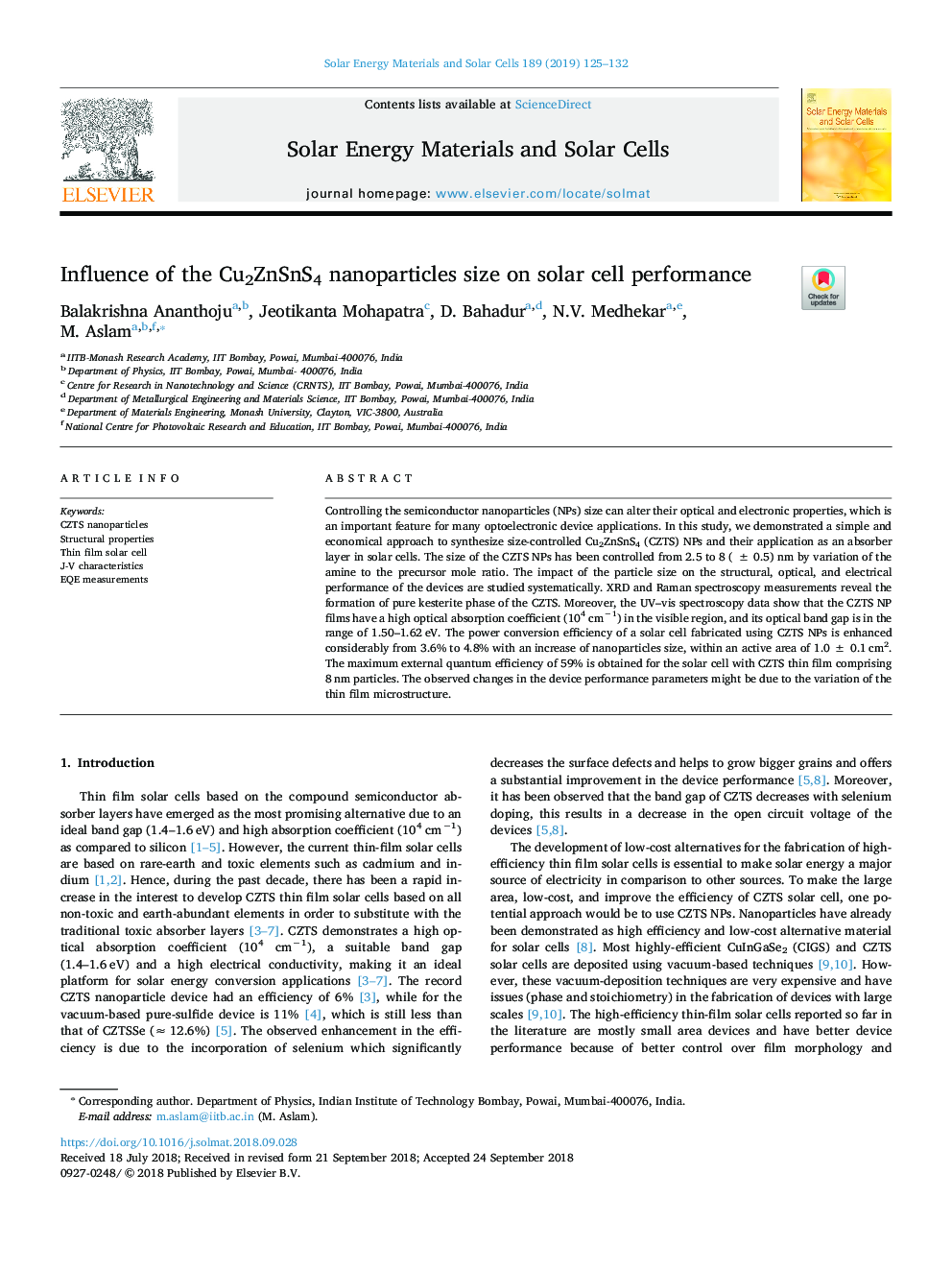| Article ID | Journal | Published Year | Pages | File Type |
|---|---|---|---|---|
| 11001471 | Solar Energy Materials and Solar Cells | 2019 | 8 Pages |
Abstract
Controlling the semiconductor nanoparticles (NPs) size can alter their optical and electronic properties, which is an important feature for many optoelectronic device applications. In this study, we demonstrated a simple and economical approach to synthesize size-controlled Cu2ZnSnS4 (CZTS) NPs and their application as an absorber layer in solar cells. The size of the CZTS NPs has been controlled from 2.5 to 8 (â¯Â±â¯0.5) nm by variation of the amine to the precursor mole ratio. The impact of the particle size on the structural, optical, and electrical performance of the devices are studied systematically. XRD and Raman spectroscopy measurements reveal the formation of pure kesterite phase of the CZTS. Moreover, the UV-vis spectroscopy data show that the CZTS NP films have a high optical absorption coefficient (104 cmâ1) in the visible region, and its optical band gap is in the range of 1.50-1.62â¯eV. The power conversion efficiency of a solar cell fabricated using CZTS NPs is enhanced considerably from 3.6% to 4.8% with an increase of nanoparticles size, within an active area of 1.0â¯Â±â¯0.1â¯cm2. The maximum external quantum efficiency of 59% is obtained for the solar cell with CZTS thin film comprising 8â¯nm particles. The observed changes in the device performance parameters might be due to the variation of the thin film microstructure.
Related Topics
Physical Sciences and Engineering
Chemical Engineering
Catalysis
Authors
Balakrishna Ananthoju, Jeotikanta Mohapatra, D. Bahadur, N.V. Medhekar, M. Aslam,
